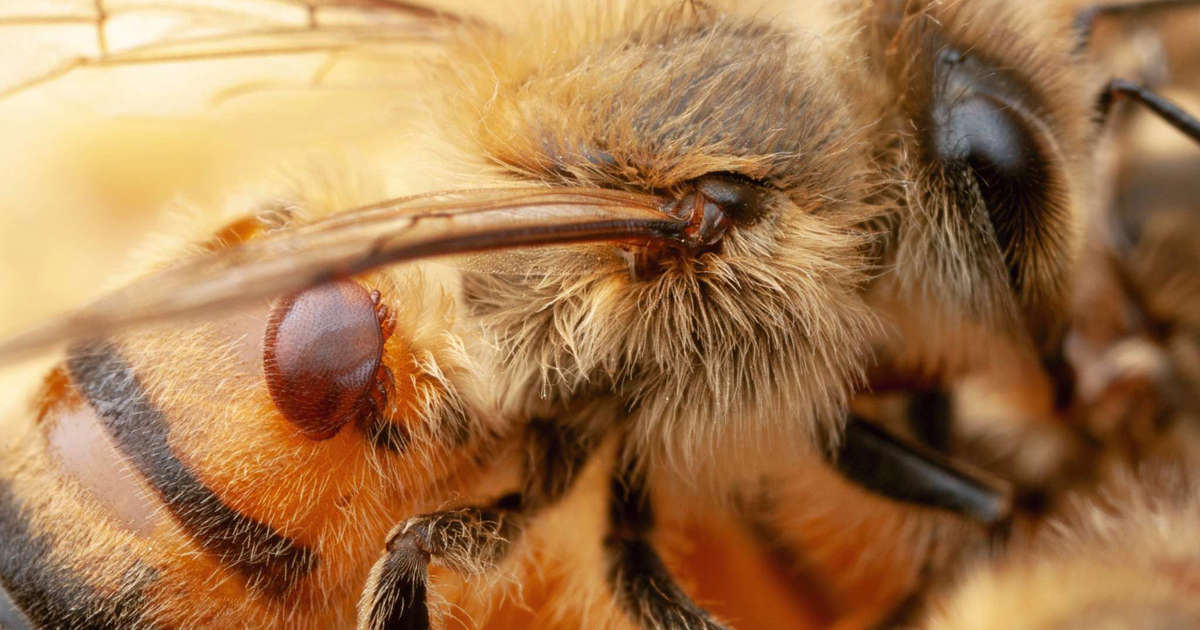



Article by: Hari Yellina
Following the discovery of a fresh Varroa mite epidemic at Nana Glen, horticulture growers in the Coffs Harbour region are quickly addressing their plan B for pollination this spring. NSW DPI biosecurity officers have destroyed hives on-site and are quickly inspecting registered hives within a 10-kilometer radius. Bees are prohibited from travelling without permission within 50 kilometres. Even if there is a genetic relationship between the mite and the Newcastle outbreak, there are legitimate concerns that the industry-destroying bug—which carries a disease—may spread to wild hives in the nearby state forest.
The new biosecurity zones directly touch 3000 hives, and NSW Apiarists Association President Steve Fuller is quite worried that the mite, which breeds within its own sibling group, could infect wild hives in those areas. He remarked, “That’s the trouble with the North Coast. “The environment is lovely for bees. Not unbearably cold.” Mr. Fuller emphasised once more the significance of informing Local Land Services about all hives. We would be in a much better position if everyone told the truth, he said. “We don’t mind if the hives are infected or not registered. Varroa needs to be controlled. “DPI hasn’t determined exactly how the mite entered Australia; they are currently speculating that it may have appeared for the first time at Williamtown on December 21. However, before we accuse anyone, let’s wait for them to complete their research.
Meanwhile, the biosecurity effort is constantly evolving, and then something like Nana Glen throws a wrench in the gears and delays us for weeks. From now until the end of September, Coffs Harbour will need to pollinate over 5000 honeybee hives to pollinate blueberries, raspberries, blackberries, avocados, and macadamias. DPI will keep working closely with business to find the best solutions. Kellie Potts, a horticulturist from Sandy Beach, met with Dugald Saunders, the minister of agriculture, last week to talk about the effects of the varroa mite on her mixed-production farm. According to her, “we have previously used native bees to pollinate our winter crop of blueberries, but like all other berry producers, we have yet to pollinate our summer crop.”
The presence of FMD and LSD, according to Mr. Saunders, serves as a timely warning for livestock farmers to make sure their farm biosecurity protocols are current. According to Mr. Saunders, “Farm biosecurity policies are the cornerstone of our state’s preparation when it comes to emerging animal and plant illnesses.” These straightforward precautions can be incorporated into regular business operations to help safeguard your farm. As part of an updated biosecurity strategy, primary producers will have the chance to comment on an NSW Government plan to protect the State’s $21 billion food and fibre economy. The strategy’s goal, according to NSW’s agriculture minister Dugald Saunders, is to establish a clear vision for biosecurity and food safety.
The NSW Biosecurity and Food Safety Strategy 2022–2030 will serve as our guide in defending the environment, economy, and way of life against threats to biosecurity and food safety, according to Mr. Saunders. “Biosecurity and food safety are everyone’s business and shared responsibility. Recent outbreaks of the foot-and-mouth disease, lumpy skin disease, and varroa mite in New South Wales have demonstrated the urgent need for us to be ready, both now and in the future. “In order to better avoid and respond to risks and minimise any negative repercussions, we have been working hard to develop NSW’s expertise and capacity to manage risk. We have invested in tools and technologies and improved how we work together. Your suggestions will be used to develop a plan that we can implement jointly to strengthen our community.” The strategy builds on the government’s record expenditure of $163.9 million in biosecurity protection announced in the 2022–23 State Budget and reflects a strong commitment to defending NSW from threats to biosecurity and food safety. Producers can assist NSW DPI by reporting suspect or uncommon pests and diseases online or by dialling 1800 680 244, which connects to the NSW DPI Biosecurity Helpline.